What is cedar mulch? Why is it so popular? What are its pros and cons? Should you be doing it in your garden or not? Check out the article to find out everything about this garden-enhancing mechanism!
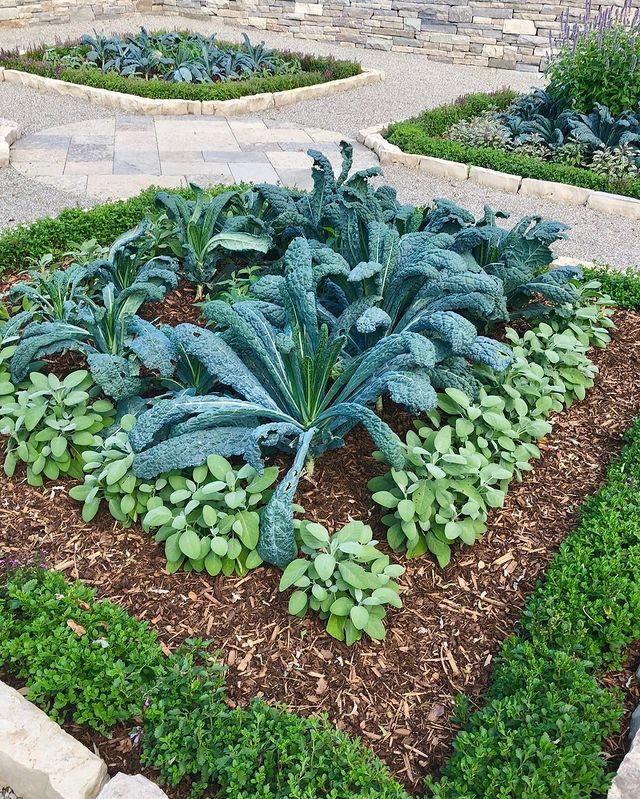
What Is Mulching?
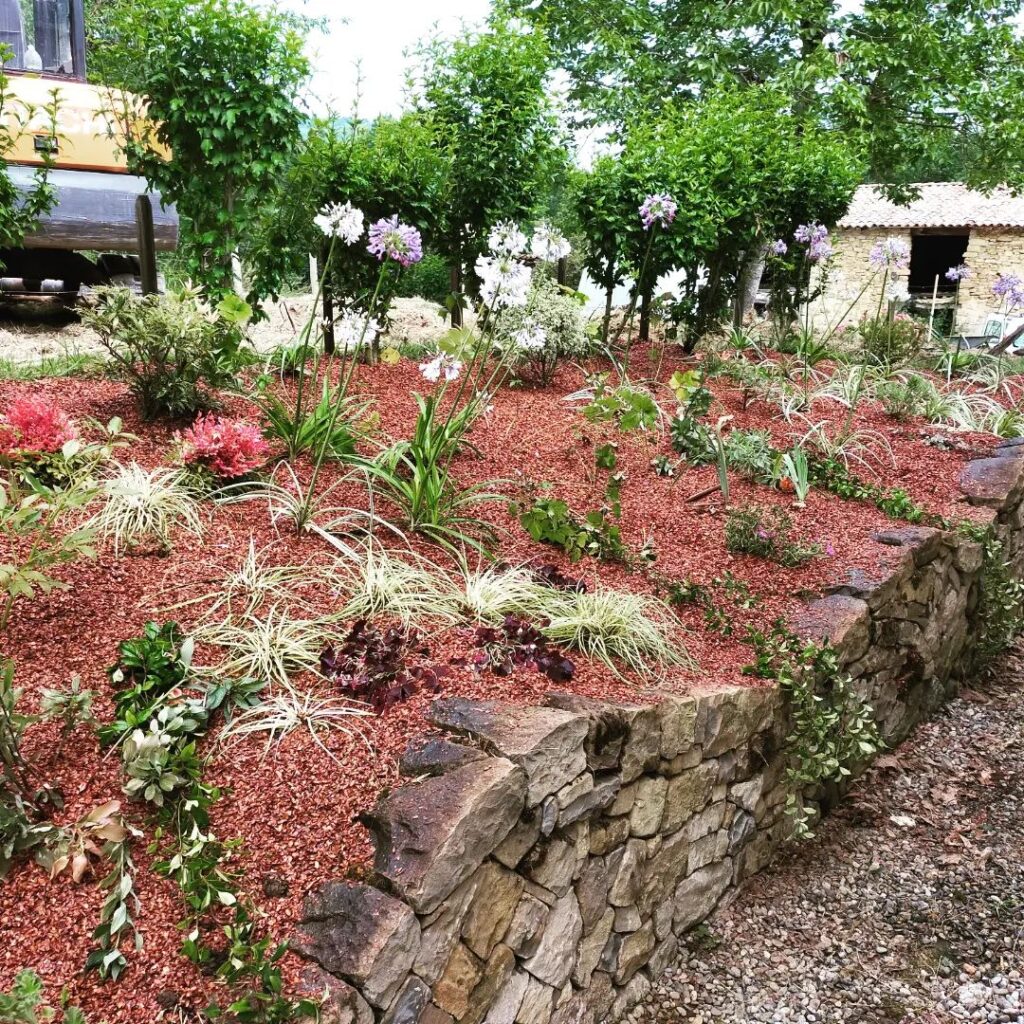
Mulching is one of the best time-saving measures and means of protection a gardener can take as it maintains optimal conditions for plant growth and prevents or slows down some of Mother Nature’s harmful sides, such as weeds and soil erosion.
Mulch’s actual role is to simulate forest litter and is used in vegetable gardens and flower beds.
RELATED: What Type Of Grass Grows Best In Clay Soil | Best Grasses For Clay Soil
When is the Best Time for Mulching?
Mulching is best done in the spring. To ensure the best results, aim for the period after the heavy rains when the shoots are already sprouting. Spring mulch then controls all new weeds and gives young plants the necessary food for further development.
One other important reason why people are encouraged to mulch only when the period of frequent spring rains has passed is that we want to give the moisture the opportunity to evaporate from the soil moisture.
A small amount of moisture is good for the plant; a lot of moisture favors the development of rot and bad bacteria, which can harm young plants.
Autumn is another good opportunity to prepare your garden for the upcoming season and to prevent the growth and development of young weeds in the spring. But do not worry too much about the exact time. You can mulch at any time of the year!
The chance of doing something bad by doing so is much less than the chance of your garden being flooded with weeds.
Types Of Mulch
There are two basic types of mulch: organic and inorganic.
Organic mulch includes natural materials such as leaves, straw, grass clippings, compost, pieces of wood, shredded bark, sawdust, pine needles, and sometimes even paper.
Inorganic mulch refers to pea gravel, rocks, geotextiles, rubber, etc. While both have many benefits for the plants, only organic mulch improves the soil by providing more nutrients as it decomposes.
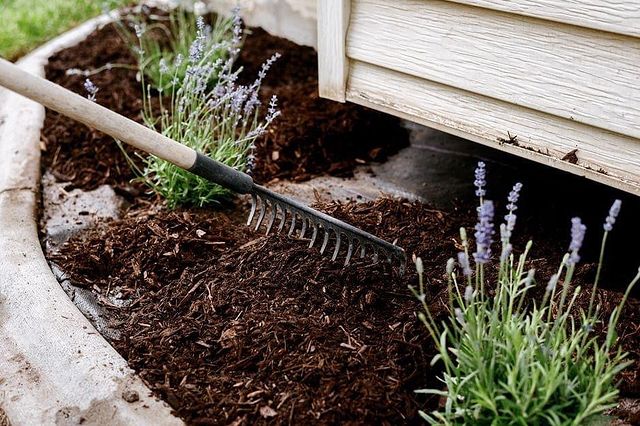
Cedrus
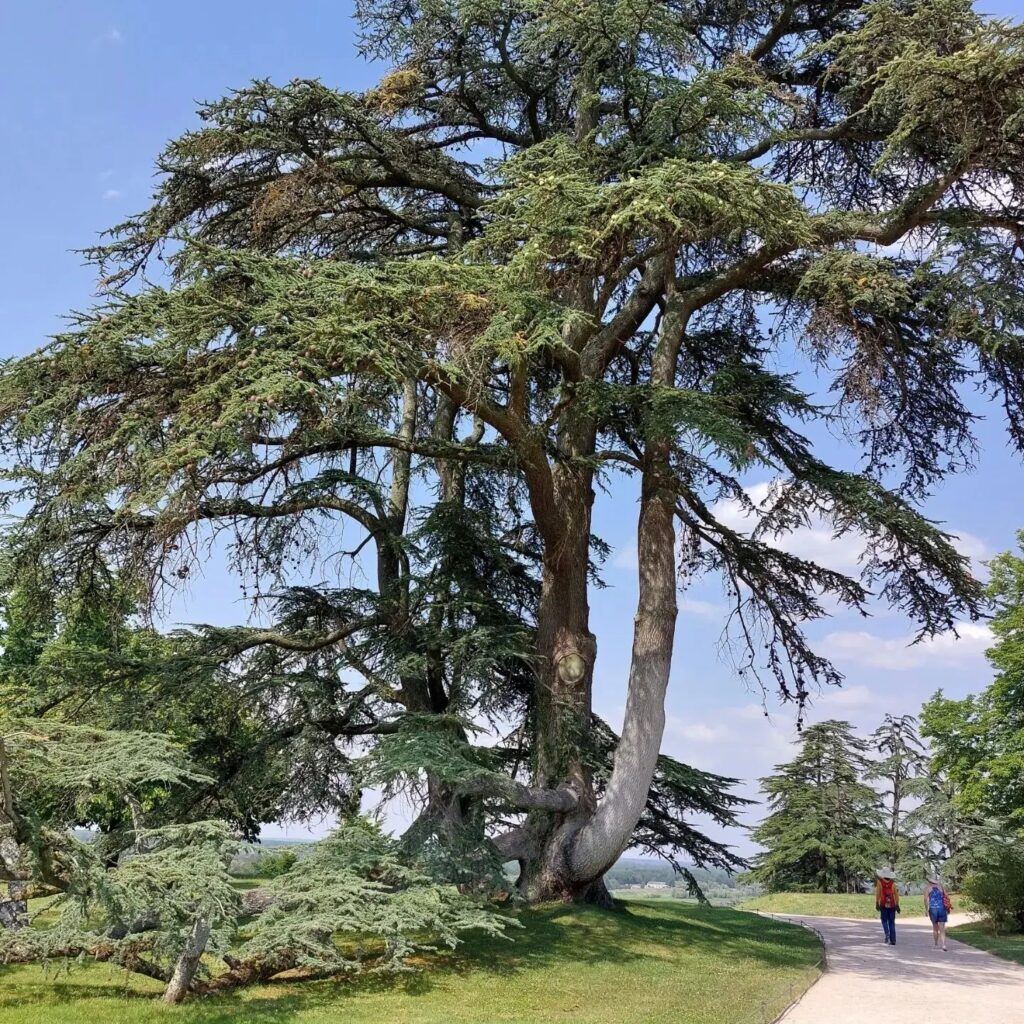
Cedar (Cedrus spp.) is a genus of evergreen, coniferous trees from the family of pines with hard and prickly, four-edged needles. The needles are gathered in tufts on short branches of the tree and stand individually on long ones.
There are four species of cedar tree growing in different parts of the world: Lebanon (Cedrus libani), Cyprus (Cedrus brevifolia), Atlas (Cedrus atlantica), and Himalaya (Cedrus deodara).
In addition, some other types of wood, like Incense-cedar (Calocedrus decurrens), are not a part of this genus but bear the name cedar.
Pros Of Cedar Mulch
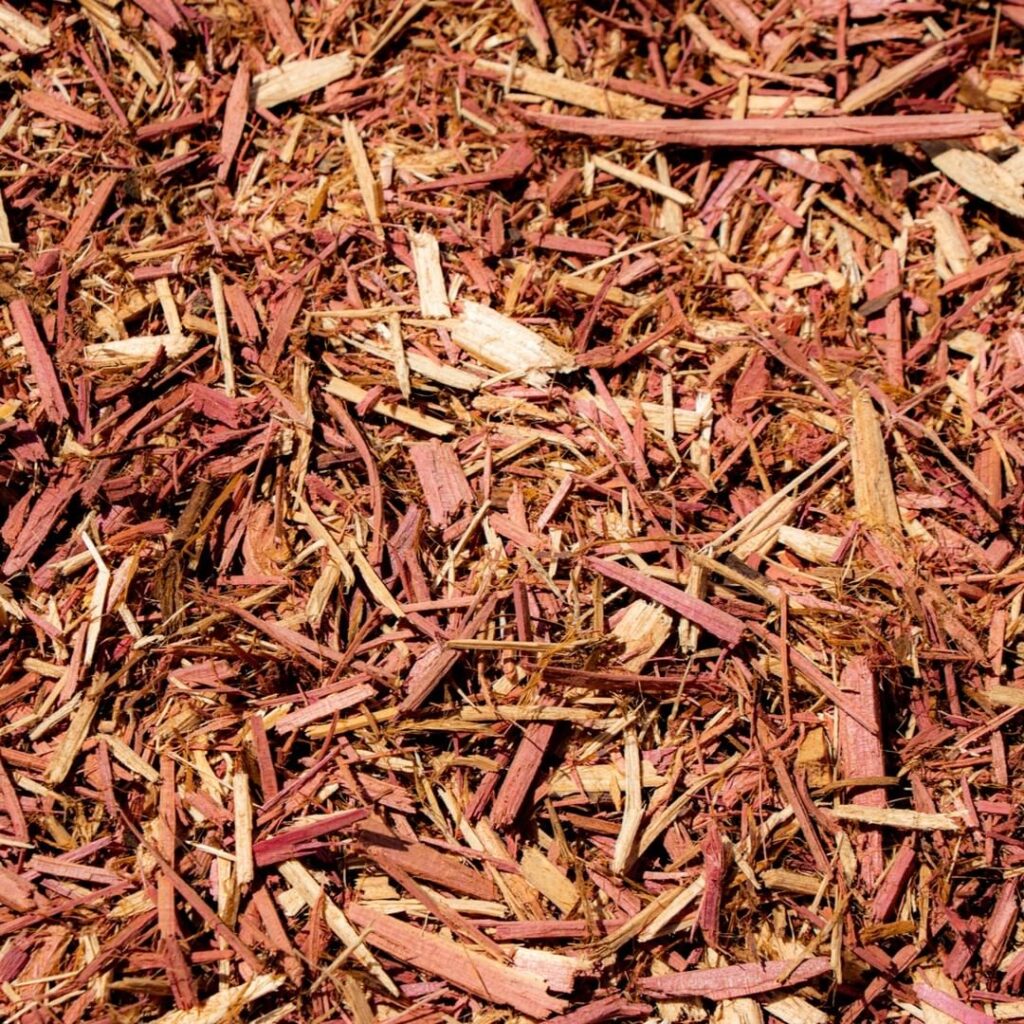
Cedar mulch is made from the bark of the cedar tree and is one of the best types of bark mulches. You can find it in chipped or shredded form.
It has numerous benefits, which is why it is so popular nowadays. For example, it controls weed development, helps soil retain moisture, insulates and enriches the soil, prevents soil erosion, repels insect pests, saves time, has a pleasant aroma, and is quite decorative.
While the above list is certainly not exhaustive, it should help you understand why many people use cedar mulch in their gardens.
Therefore, let’s take a closer look at all these advantages one by one!
Weed Inhibition
Many gardeners know how frustrating dealing with unwanted weed growth can be. Sometimes it just looks like a fight you can not seem to win.
That is because the usual method of digging up and removing weeds while it takes care of the problem at the moment creates the conditions for a new generation of weeds to grow even faster, easier, and stronger.
However, not everything is so bleak. Cedar mulching is the simplest and fastest way to fight weeds competing with your plants for space and nutrients since it prevents light from reaching the soil surface, which is harmful to weed growth.
But what is more important is that the lack of sunlight will not allow weed seeds to germinate.
But weeds are notorious for, well, being weeds which means that full weed prevention is probably impossible. But that should not worry you since the few “lucky” ones that surface will stick out like a sore thumb and are quite easy to deal with.
Moisture Retention
Another advantage of cedar mulching is that it keeps soil moisture levels high even during hot summer. Namely, if a summer downpour soaks your garden or you decide to do the same with a hose, the water will evaporate very quickly once the scorching sun appears.
A layer of cedar mulch covering the ground will allow the soil to retain moisture for much longer than it usually would. Doing so saves you time and money since it reduces the frequency of irrigation and the amount of water consumed.
Soil Insulation
Cedar mulch acts as a great regulator of the day and night soil temperature by reducing sudden changes in the soil temperature, which contributes to a more consistent and faster growth of the plants.
It not only helps regulate daily but also seasonal temperatures. For example, in the winter months, bare soil is exposed to freezing, resulting in the death of many beneficial microorganisms responsible for creating fertile soil and increasing humus.
But these tiny organisms are not the only things that will be saved from big minuses. Plants, or to be more precise, their roots, are pretty sensitive to frost and snow, so insulating the soil with cedar will ensure they survive the cold temperatures.
If you grow flowers in a hot climate, fear not because cedar mulch helps in these situations as well by keeping the soil cool and at a safe distance from temperatures that might otherwise be hard to handle.
Richer Soil
Although cedar mulch decomposes slower than some other mulches, eventually, it does decay, and that can mean only one thing – feeding the soil with substances that your plants love.
More nutrients and micronutrients are the reason why fruits and vegetables grown on mulched soil give better yields and juicier fruits, sometimes even up to a 50% yield increase compared to fields that are not mulched.
Soil Erosion Prevention
One of the most important things for successful plant development is fertile soil. However, strong winds and especially heavy rains are the biggest causes of soil erosion, resulting in loss of soil fertility and non-optimal plant growth and crop yield.
But since cedar mulch is a physical barrier shielding the soil from the outside world, the effect these external influences have on soil is kept in check, and the danger of soil erosion is minimized.
Natural Pesticide
Cedar mulch is not only a protective layer that will soften Nature’s strong blows, but it will also deter some of its most irritating ones – pests. Cedar wood is excellent at repelling insects and pests since it contains an oil called thujone.
Aphids, mealybugs, worms, whiteflies, and beetles are just some of these tiny animals which are not on speaking terms with this chemical and which you will not have to worry about once you mulch your garden with either cedar bark chips or shreds.
Time Saving And Long Lasting
When talking about water retention, we briefly mentioned that not having to water your flower beds constantly will save you time. But not dealing with weeds or insect pests are other advantages of using cedar mulch that will enable you to use your time in a more productive manner.
And that is not all! Cedar mulch lasts for years since it decomposes slowly, which means that once installed in your garden, it will not need much maintenance and seasonal changing. With cedar mulch, older people or people with busy schedules can also enjoy the benefits of having a tidy garden.
Decoration and Fragrance
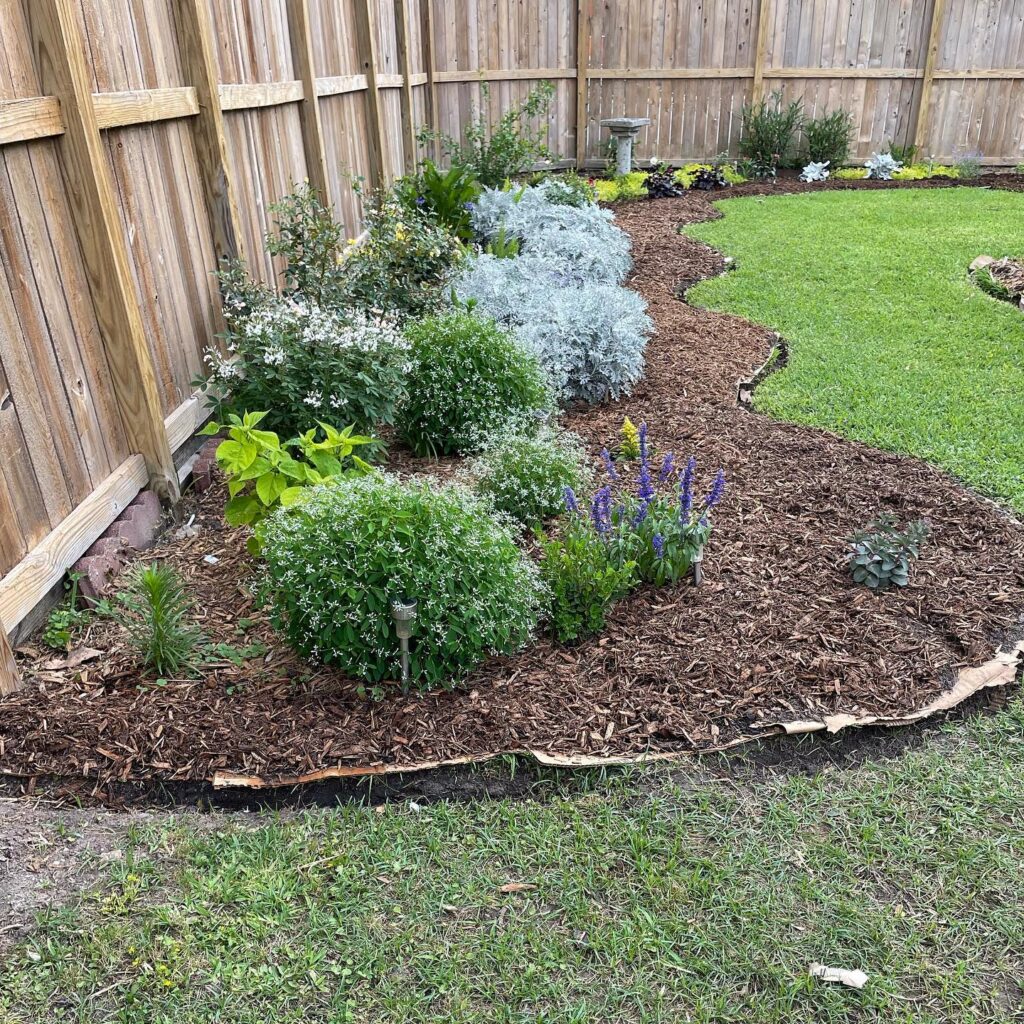
We will finish this long list of cedar mulch’s pros with two of its less practical benefits: its decorative value and fragrance.
Naturally reddish, cedar mulch will beautifully blend in with landscaping beds. Adding a mulch layer to your garden will make it look more attractive and organized.
If cedar’s natural hue is not entirely to your liking, there is a solution: you can buy dyed cedar mulch in colors such as brown, black and bright red. However, do not expect it to look fresh forever, as the color will start to fade with time.
But cedar is not just easy on the eyes – it also has a pleasant and camphoraceous odor that will make you leave your house and spend time outside, feeding your sense of sight and smell and your soul.
Cons of Cedar Mulch
Nothing in this world is perfect, and cedar is certainly not an exception. Similar to other organic mulches, it has many benefits and application cases but is not a perfect fit for every garden and every plant. Keep reading to find out if some or all of its downsides outweigh the positives for you.
Cost
Although not the most expensive type of wood mulch, cedar mulch is definitely up there when it comes to price, so if money is an issue, you should avoid cedar mulch.
But you should also remember that cedar mulch is one of the most long-lasting hardwood mulches out there. So price, the area to be covered, and longevity should all be considered when deciding whether to buy it or not.
Nitrogen Loan
If you have had any experience with wood mulches, you have probably heard about this “problem”: organic mulches steal the much-needed nitrogen from the soil and therefore hinder plants’ development. Although this is not false, it is also not as big an issue as you may think.
First things first, cedar mulch, which is a type of wood mulch, is low on nitrogen and will use some of the available nitrogen while decomposing. However, only the surface of the soil will be in “danger” since the mulch layer is right on top of it.
One of the cedar mulch pros we have already talked about is that it will enrich the soil with nutrients and organic matter when it finally decomposes. So, in the end, all the nitrogen that was taken will be returned to the ground where it came from originally.
In the meantime, and especially if you are growing plants that are hungry for nitrogen, using some nitrogen-rich fertilizer will do the trick.
Natural Insecticide
Yes, we said that cedar trees being a natural insect and pest repeller is a pro. But cedar can not choose which insects it will repel and which it will not, and that means that many beneficial insects such as ladybirds, butterflies, bees, and moths will also be kept out of your garden.
Whether pollinators, predators, or parasitizers, all these types of bugs have their place and purpose in the food chain.
Fragrance Sensitivity
Yet another pro of cedar mulch is its con at the same time. Although the number of people susceptible to certain fragrances is not large, such people do exist, so the cedar scent, which many find pleasant, can be problematic for others.
That is why, before embarking on the cedar mulch adventure, you should consider this tiny but a problem nonetheless because you do not want to be responsible for anyone’s allergic reaction.
Acidic Soil
Similar to overblown cedar’s love for nitrogen, there is a notion that cedar mulch makes the soil acidic. While that is technically correct, the actual effect of cedar mulch on acidifying the soil is not significant at all, and it would take large amounts of it to do some real “damage”.
However, the only time you should opt-in for some other mulch is if the soil you plan on covering with mulch is already acidic.
If you want to learn even more about cedar mulch, check out the video below!
Frequently Asked Questions
Will cedar mulch hurt my plants?
No. Although cedar mulch has certain negative sides, which we described in this article, it does not contain any allelopathic (toxic) chemicals and will not hurt any plants underneath or around.
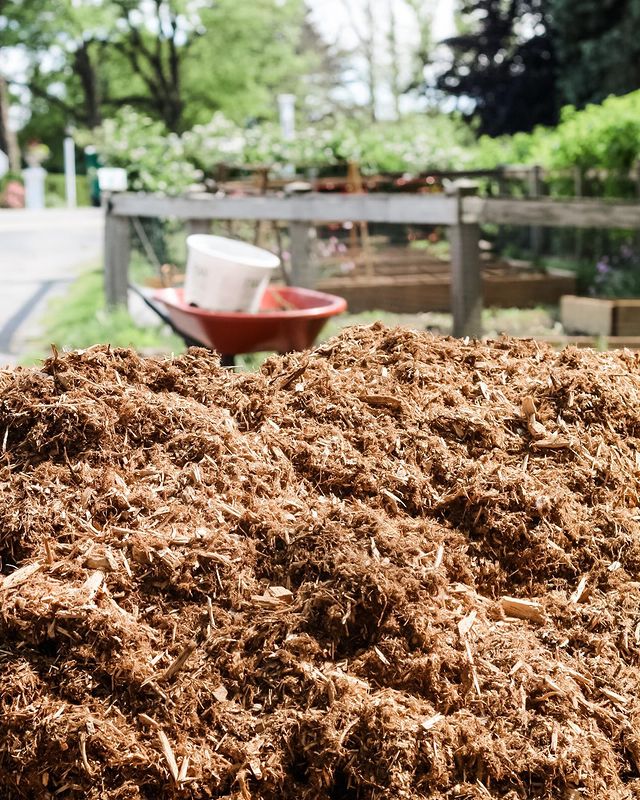
How thick should cedar mulch be?
A: It is generally advised not to cover the soil with large amounts of cedar mulch since the soil might become congested, preventing the evaporation of excess water. The exact quantity you will need, of course, depends on the size of the area you will mulch.
Thinner layers are recommended after sowing the plants and in the earlier vegetation phase of growth, while thicker layers should be applied in plantations of adult trees and shrubs.
Mulch should be kept a few inches away from the plant’s trunk to prevent congestion of the neck zone of the plant roots.
Editor’s Recommendations
10 Different Coffee Plants (Including Photos)
11 Lovely Lilac Trees (With Pictures)







